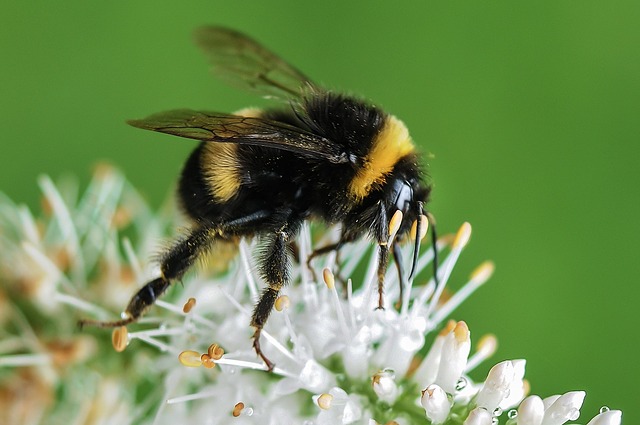On Thursday, the U.S. Fish and Wildlife Service (USFWS) proposed listing the rusty patched bumble bee as endangered under the Endangered Species Act. The proposed listing stems from a 2013 petition submitted by the Xerces Society for Invertebrate Conservation. Per the Christian Science Monitor, the organization later filed a lawsuit against USFWS in 2014, claiming the government did not respond to the petition.
Per a USFWS fact sheet, rusty patched bumble bees contribute to food security as pollinators and are critical to ecosystems for creating seeds and fruits. Specifically, “Bumble bees are among the most important pollinators of crops such as blueberries, cranberries, and clover and almost the only insect pollinators of tomatoes. Bumble bees are more effective pollinators than honey bees for some crops because of their ability to ‘buzz pollinate.’” USFWS also notes the “economic value of pollination services provided by native insects (mostly bees) is estimated at $3 billion per year in the United States.”
The Xerces Society claims declines in some North American bumble bees contribute to “increased pathogen levels and reduced genetic diversity.” The group also maintains the rusty patched bumble bee may be threatened by “pathogens, pesticides, habitat loss or fragmentation, climate change, and competition with honey bees for nectar and pollen.”
However, CropLife America, a trade association representing manufacturers of pesticides, told Agri-Pulse, “Research and field studies have consistently found no unreasonable adverse effects on pollinator populations when pesticides are applied according to label directions.”
Currently, USFWS works to conserve the bumble bee population by partnering with trusts, conservancies and restoration groups, including the North American Pollinator Protection Campaign and the USDA Natural Resource Conservation Service. The agency believes the public can assist their efforts by growing gardens and limiting the use of pesticides and fertilizers.
